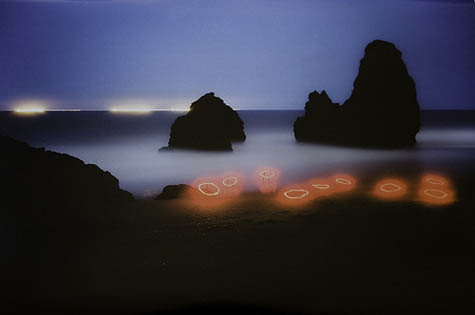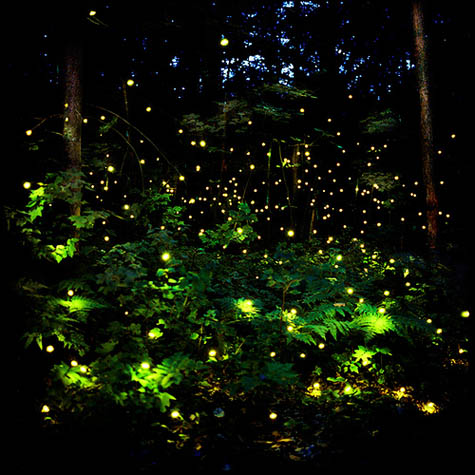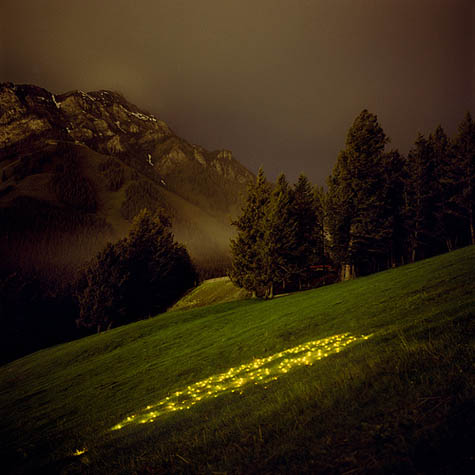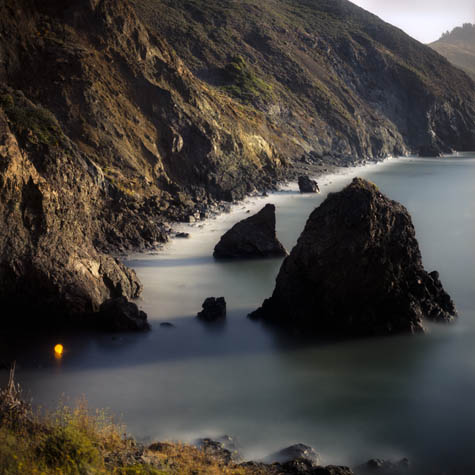Electrical Folklore
 [Image: Barry Underwood, courtesy of Johansson Projects].
[Image: Barry Underwood, courtesy of Johansson Projects].The Johansson Projects gallery over in Oakland is hosting an exhibition of photographs by Barry Underwood, called Earth Engines; the show also includes a series of sound installations by artist Oliver diCicco.
 [Image: Barry Underwood, courtesy of Johansson Projects].
[Image: Barry Underwood, courtesy of Johansson Projects].On the one hand, Underwood's photos document an obvious artistic intervention into the landscape, in the form of embedded and highly colorful light sources smuggled into unlikely situations; but, on the other, these images imply that Underwood has, in fact, captured a previously unrecorded natural phenomenon, an unidentified electrical presence in the trees. In other words, like some battery-powered variation on "Pickman's Model" by H.P. Lovecraft, these earth engines could, under the right circumstances, perhaps even be naturally occurring: glowing piles of uranium, say, or strange new bioluminescent creatures, unknown to science till now.


 [Images: Barry Underwood, courtesy of Johansson Projects].
[Images: Barry Underwood, courtesy of Johansson Projects].The juxtapositions of spectacular landforms and immersive, forested environments with these subtle networks of lighting effects—and the accompanying idea that there might be a power source shining away somewhere deep within the natural world—even brings to mind Archigram's design for a deep-woods electrical outlet disguised inside an artificial log.
Of course, I'm also reminded of an old Paul Simon song: These are the days of lasers in the jungle.
 [Image: Barry Underwood, courtesy of Johansson Projects].
[Image: Barry Underwood, courtesy of Johansson Projects].So is it a Will-o'-the-Wisp or stray camper's light? A radioactive spill or an art project?
Produce a catalog of these sorts of strange lights seen in the woods, throughout history, and you've got a new field of study: electrical folklore.
 [Image: Barry Underwood, courtesy of Johansson Projects].
[Image: Barry Underwood, courtesy of Johansson Projects].In any case, the show opens up this weekend, on November 21; stop by the gallery's website for more details.





Comments are moderated.
If it's not spam, it will appear here shortly!
Reminds me of Stu Jenks, except way less mysterious.
Proof-of-concept ref. the Mushi
http://en.wikipedia.org/wiki/Mushishi
Tokihiro Sato anyone? Something about the time component of the long exposure in Sato's work is way more interesting to me.
That last picture is quite beautiful. I'd love to see something like that on a foggy day by the river.
Quite reminiscent of John Pfahl's early work.
http://johnpfahl.com/pages/newalteredmenubottonmenu.html
Post a Comment